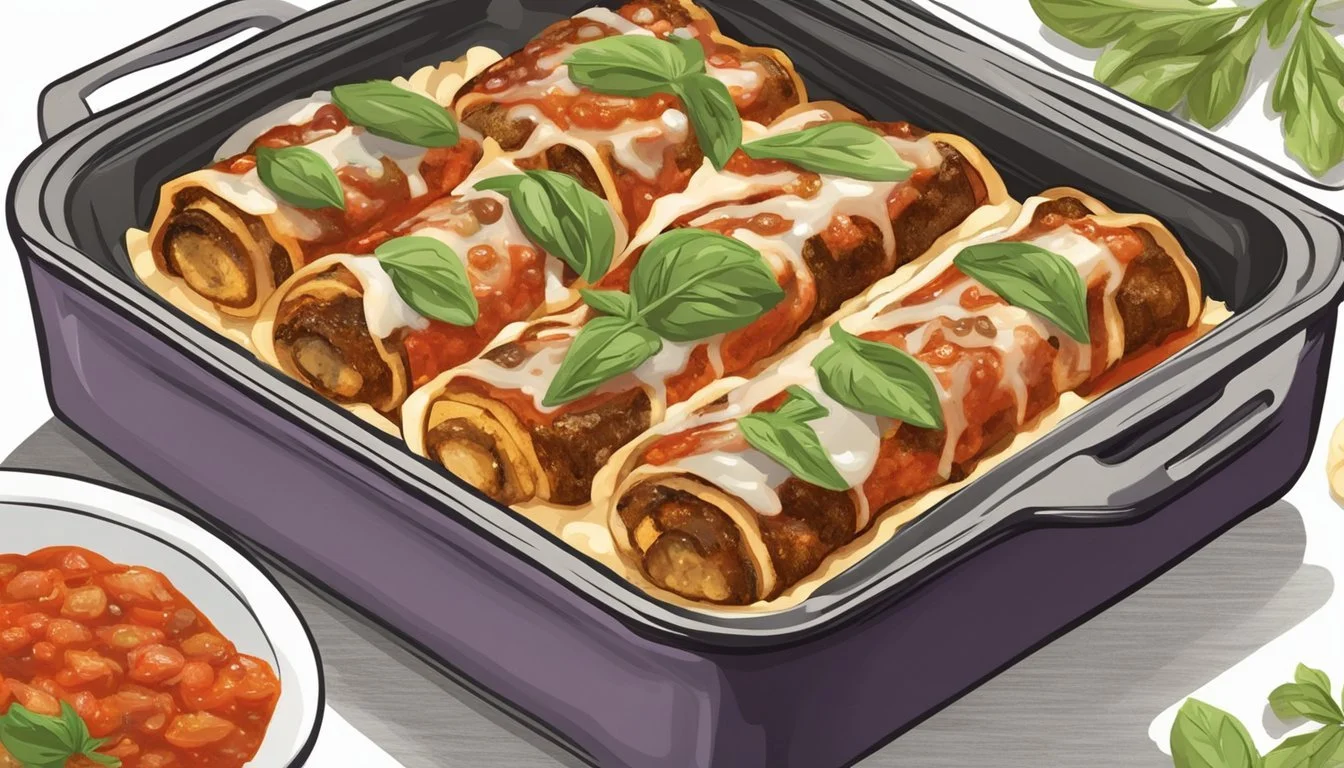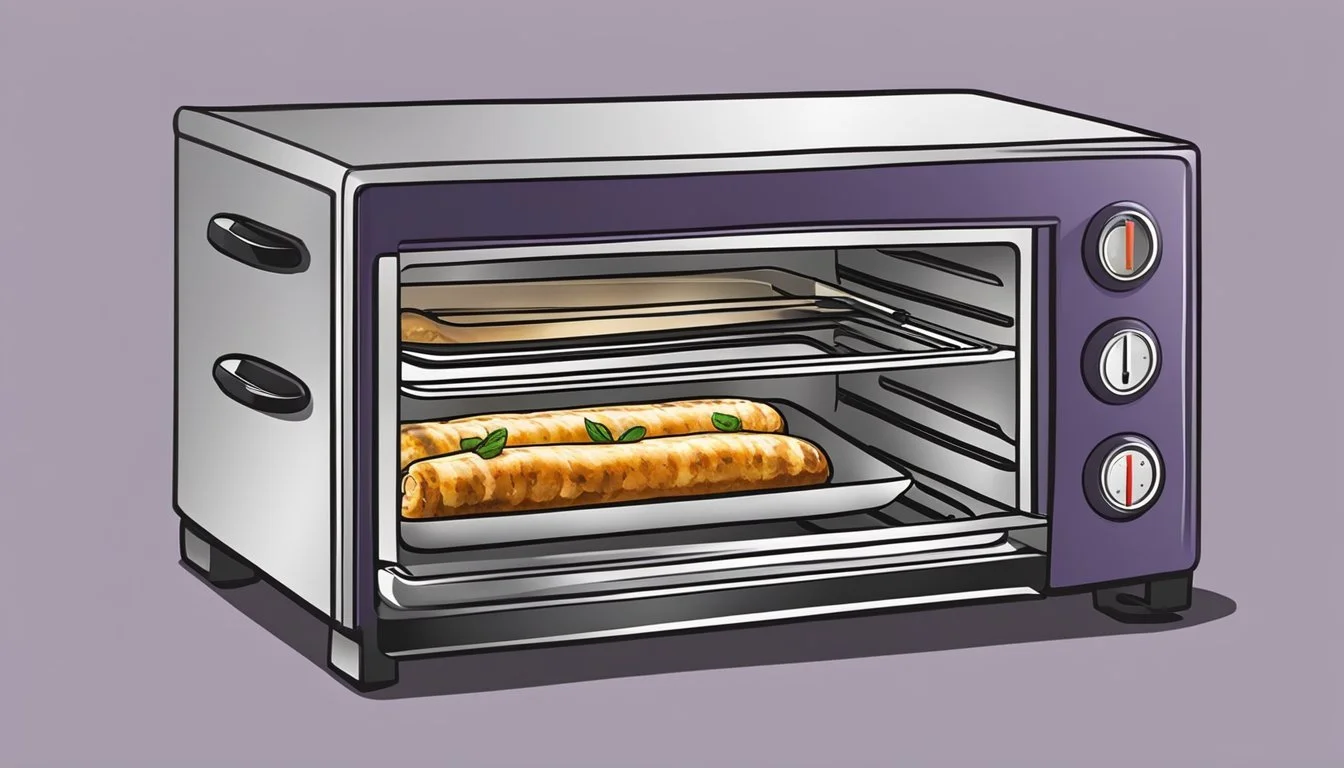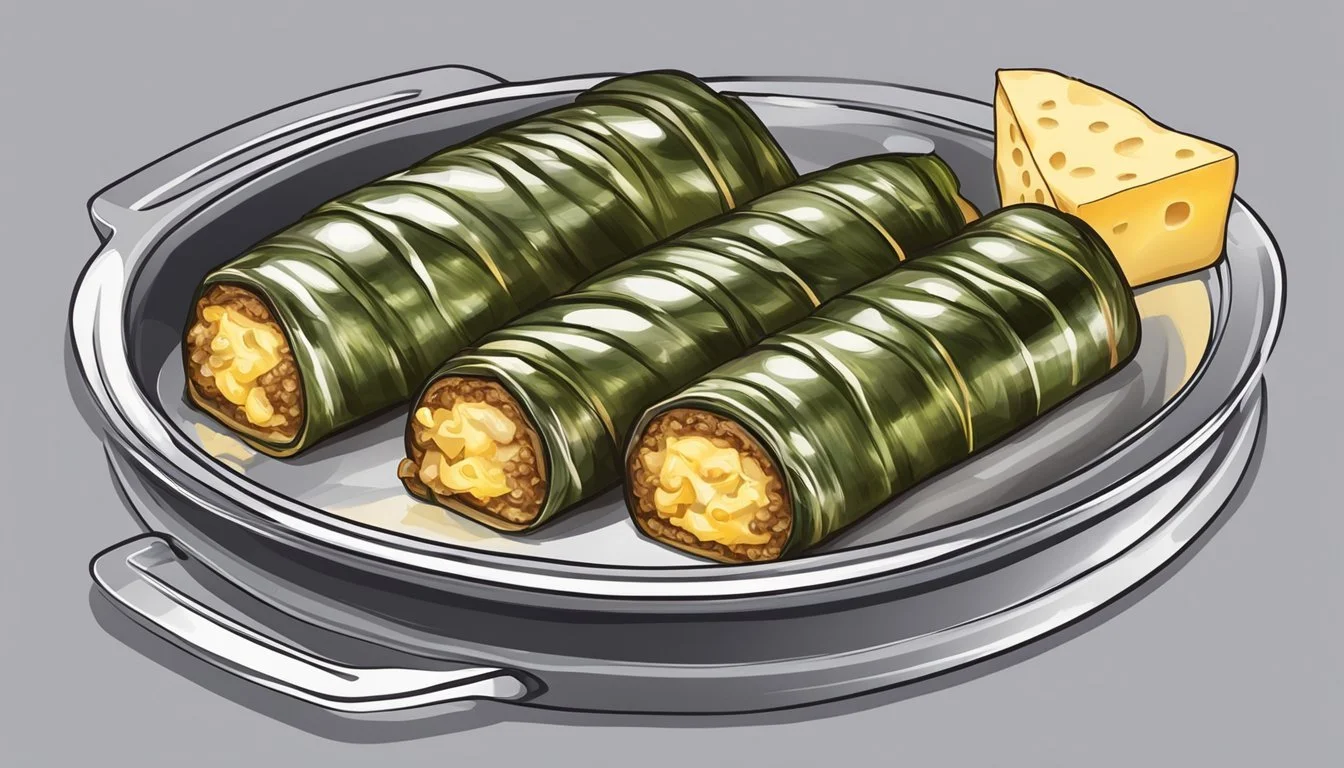How to Reheat Eggplant Rollatini
Expert Tips for Perfect Texture and Flavor
Reheating eggplant rollatini might seem straightforward, but achieving the perfect balance of taste and texture requires the right technique. To reheat eggplant rollatini effectively, the oven method is recommended. Preheat your oven to 350°F, place the dish in a covered, oven-safe container, and let it warm for about 20-25 minutes. This ensures even heating and preserves the flavors and consistency.
Microwaving is a quicker option if you need a fast solution. Place individual servings in a microwave-safe dish and heat on high for 2-3 minutes, or until heated through. Though convenient, the microwave can alter the texture slightly, making it a bit softer.
For those who cherish the original taste and texture of leftover eggplant rollatini, enhancements such as sprinkling fresh herbs like parsley or basil can elevate the reheated dish. Pairing it with a side dish can transform leftovers into a delightful meal.
Understanding Eggplant Rollatini
Eggplant Rollatini is a beloved Italian dish that combines slices of eggplant with a delightful cheese filling, all smothered in marinara sauce. The key components and texture characteristics of this vegetarian recipe play a crucial role in its overall appeal and flavor.
Components of Eggplant Rollatini
Eggplant Rollatini consists of several essential components. The main ingredient is thinly sliced eggplant, often baked or grilled to soften.
The filling usually includes ricotta cheese mixed with mozzarella and Parmesan, creating a creamy and flavorful interior. Minced garlic, salt, and pepper are commonly added for extra seasoning.
Marinara sauce is a crucial part, draped over the rolled eggplant to add acidity and richness. Fresh herbs like basil or parsley may be sprinkled on top for garnish.
Each element contributes to a harmonious blend of flavors typical of Italian cuisine.
The Role of Texture and Moisture
Texture and moisture are vital in achieving the perfect Eggplant Rollatini. The eggplant should be tender enough to roll without breaking, yet firm enough to hold its shape.
Properly preparing the eggplant involves salting the slices and letting them sit for a while to draw out excess moisture. This step prevents the dish from becoming too watery.
The cheese filling adds a creamy texture, while the melted mozzarella and Parmesan contribute to a slightly gooey consistency. Lastly, the marinara sauce ensures the dish remains moist and cohesive, preventing dryness and enhancing flavor profiles.
Pre-Reheating Preparation
Preparing leftover eggplant rollatini for reheating involves evaluating the condition of the dish and following specific steps to ensure it tastes fresh and delicious. Proper preparation can make a significant difference in maintaining the dish's texture and flavor.
Assessing Leftover Eggplant Rollatini
First, inspect the leftover eggplant rollatini. Check if it has been stored properly in the refrigerator to avoid any spoilage. Ensure the dish is covered with aluminum foil or an airtight container to maintain freshness.
Examine the texture of the eggplant. If it appears too soggy, it may affect the final result after reheating. Also, check for any excess moisture, as this can lead to a mushy texture.
Consider adding some extra marinara sauce before reheating to keep the dish moist and flavorful. If reheating small portions, ensure they are evenly cut to promote consistent warming.
Preparation Tips for Better Reheating
Use the oven for the best results. Preheat it to 350°F (175°C). Place the eggplant rollatini in an oven-safe dish and cover with aluminum foil to prevent the top from drying out. This method helps maintain the dish's creamy texture and cheesy goodness.
For faster reheating, use the microwave. Place the rollatini in a microwave-safe dish and cover partially to allow steam to escape. Heat on medium power in one-minute intervals, checking frequently to avoid overheating.
If preparing eggplant parmesan alongside, follow a similar approach. Ensure both dishes reach an internal temperature of 165°F (74°C) before serving to ensure they are safe to eat.
These careful steps help in preserving the deliciousness of leftover eggplant rollatini, ensuring a satisfying meal even when it's reheated.
Reheating Techniques
Reheating eggplant rollatini can be done using either an oven or a microwave, depending on the time and equipment available. The oven method offers a more uniform heating, while the microwave is quicker and convenient.
Oven-Based Reheating Method
1. Preheat the Oven: Set the temperature to 350°F (175°C). This ensures a gentle reheating process that does not dry out the dish.
2. Use an Oven-Safe Dish: Transfer the leftover eggplant rollatini to an oven-safe dish. Cover the dish loosely with aluminum foil to prevent moisture loss.
3. Baking Time: Place the dish on a baking sheet to catch any spills. Bake for 20-25 minutes, checking periodically. Remove the foil during the last 5 minutes to allow the top layer to crisp up.
4. Check for Doneness: Make sure the internal temperature reaches a minimum of 165°F (74°C) to ensure it's properly reheated. Check the center to confirm even heating.
Microwave Reheating Tips
1. Prepare a Microwave-Safe Dish: Transfer the eggplant rollatini to a microwave-safe dish. Cover the dish with a lid or plastic wrap, leaving a small vent for steam.
2. Set the Microwave: Use medium power to avoid overcooking. Start with 2-3 minutes and then check the dish.
3. Stirring and Rotation: If the microwave lacks a rotating tray, pause to rotate the dish halfway through reheating for even heating. Stir the contents gently if possible to distribute heat better.
4. Final Check: Ensure the dish is heated through to 165°F (74°C). Allow it to sit for a minute before serving, as the heat will continue to distribute evenly within the dish.
Maintaining Quality and Safety
When reheating eggplant rollatini, maintaining both the quality and safety of the dish is crucial. Ensuring proper texture and moisture levels is essential to achieve a consistently delicious result.
Avoidance of Common Mistakes
Avoid some common mistakes to maintain the cheesy texture and appealing appearance of eggplant rollatini.
Do not overcrowd the pan or dish. This can lead to uneven heating which affects both taste and safety.
Cover the rollatini with aluminum foil to retain moisture, preventing it from drying out.
Avoid high temperatures above 375°F. Higher temps may cause burning on the edges while leaving the center cold.
Microwaving should be done with caution. Use microwave-safe containers and avoid high power settings, which can result in rubbery cheese and soggy eggplant.
Reheat in short intervals, checking regularly to ensure even heating.
Determining Doneness and Safety
Ensure food safety by checking both the temperature and texture.
Use a food thermometer to check internal temperatures. The rollatini should reach at least 165°F to be safe for consumption. This kills any potential bacteria that may have developed during storage.
Visually inspect the dish, ensuring the cheese is fully melted and there aren't cold spots.
Check the eggplant's texture: it should be tender yet slightly firm, not mushy.
Be mindful of storage durations. Leftover eggplant rollatini should not be refrigerated for more than 2-3 days. This helps prevent bacterial growth.
Following these steps helps in reheating your eggplant rollatini while keeping both quality and safety in check.
Serving Suggestions
Eggplant rollatini is a versatile dish that pairs well with various sides and benefits from thoughtful presentation. Below are some suggestions to enhance your meal.
Complementary Sides
Crusty Bread: Serve with warm, crusty bread or garlic bread to soak up the delicious sauce. The crunchy exterior and soft interior of the bread create a satisfying contrast.
Green Salad: A simple green salad with a light vinaigrette complements the richness of the eggplant rollatini. Fresh herbs and a sprinkle of parmesan can add an extra layer of flavor.
Pasta: A small portion of pasta, like spaghetti or penne, tossed in olive oil and garlic can make the meal heartier. This addition is both filling and keeps within the theme of Italian cuisine.
Presentation Tips
Fresh Herbs: Garnish the dish with fresh basil or parsley. The vibrant green adds a pop of color and a fresh aroma that enhances the dining experience.
Plating: Use a white plate to make the colors of the eggplant rollatini and accompanying sides stand out. Arrange the sides neatly for an aesthetically pleasing presentation.
Garnish: Sprinkle a little parmesan cheese and black pepper over the eggplant rollatini before serving. This adds a touch of sophistication and enhances the flavors.
These small touches can elevate the meal and make it more enjoyable for everyone at the table.
Storage and Preservation
Properly storing and preserving eggplant rollatini ensures it retains its flavor and texture for future meals. Whether refrigerated or frozen, following these guidelines will help you make the most of your leftovers.
Storing Leftover Rollatini
Leftover eggplant rollatini should be refrigerated within two hours of cooking. Place the rollatini in an airtight container, ensuring it's covered with extra marinara sauce if available. This helps keep the moisture and enhance the flavor during storage.
Use a label with the date to track how long the rollatini has been stored. For the best taste, consume leftovers within 3-4 days.
When ready to reheat, the rollatini can go directly from the refrigerator to the oven or microwave. Avoid leaving it out at room temperature for extended periods to prevent bacterial growth.
Freezing and Thawing Guidelines
To freeze eggplant rollatini, first let it cool to room temperature. Wrap each rollatini tightly in aluminum foil, and then place the wrapped pieces into a freezer-safe container or zip-top freezer bag.
Label the container with the date. Frozen eggplant rollatini maintains its quality for up to 3 months.
When ready to eat, thaw the rollatini in the refrigerator overnight. For a quicker method, use the microwave's defrost setting. Once thawed, reheat it in the oven at 350°F for 20-25 minutes.
This method ensures that the rollatini retains its texture and flavor, offering a delicious meal whenever you're ready.
Enhancing the Eggplant Rollatini Experience
Optimizing your eggplant rollatini involves selecting fresh ingredients and adding creative variations to elevate your meal. Below are specific details on how to achieve this.
Selecting Ingredients for Freshness and Flavor
Choosing the freshest eggplants is essential. Look for firm, glossy skin without blemishes. Fresh basil adds a vibrant aroma and should have green, unblemished leaves.
Part-skim ricotta cheese ensures a creamy yet light filling. To enhance the flavor, freshly grate the Parmesan cheese instead of using pre-grated options. Marinara sauce made from ripe tomatoes will provide a rich and tangy base. Combining these elements will make the eggplant rollatini both delicious and authentic.
Creative Variations and Additions
Introducing spinach into the cheesy filling can add a nutritious boost and a pleasing texture. Mixing spinach with ricotta and Parmesan cheese before stuffing the eggplants creates a more complex, hearty flavor.
For an extra layer of taste, consider using a blend of Italian cheeses such as mozzarella and Asiago along with ricotta. You might also sprinkle chopped herbs like parsley or thyme atop your rollatini after reheating. This fresh garnish not only enhances the appearance but also adds a delightful final touch to your homemade meal.







